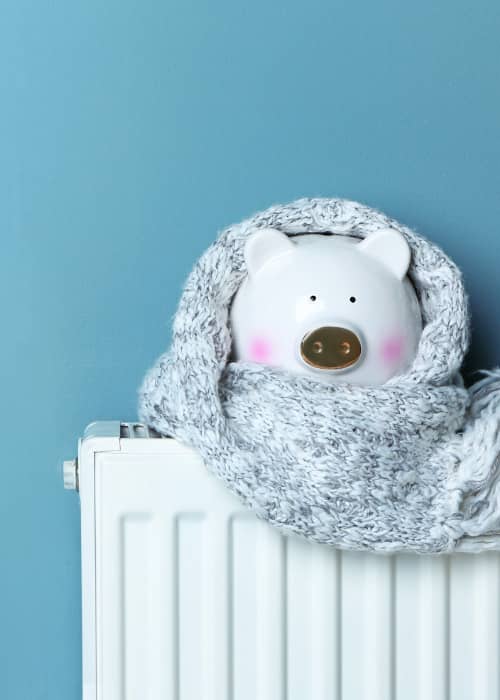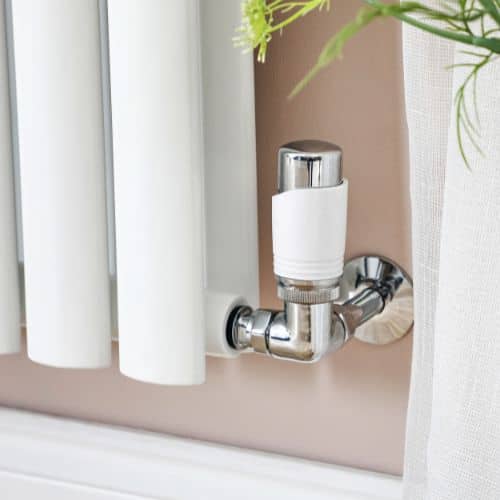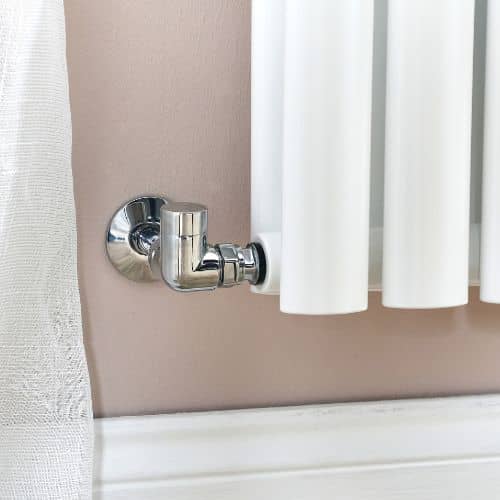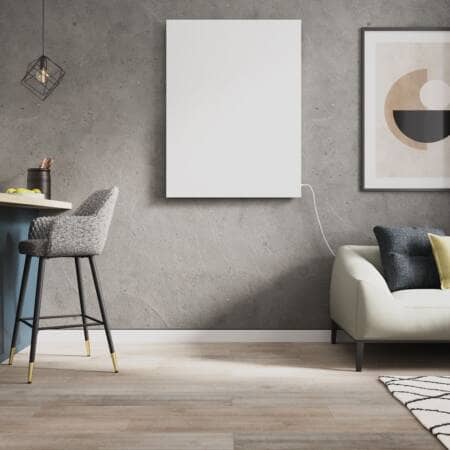Having an understanding of how to isolate a radiator is a handy skill to have to help you complete simple radiator maintenance jobs. It is something that most DIY enthusiasts will know how to do as it is quick and easy to complete and removes the cost of calling a plumber out.
In this article we will explain what isolating a radiator means and take you through a step by step guide on how to do it properly. We will also answer some of your other FAQs relating to radiator isolating. Let’s do this.
Contents
ToggleWhat does isolating a radiator mean?
So, what does isolating a radiator actually mean? Isolating a radiator means shutting off the water supply to that individual radiator.
When the water stops running to the radiator, the radiator will be disconnected or isolated from the rest of the central heating system.
It is a similar job to turning off a radiator, but you also need to close off the lockshield valve to isolate it properly.
If you want to remove the radiator from the wall, you will need to isolate it first. Then you will need to disconnect the valves from the pipes and drain the radiator.
Be sure to have a bucket and towels as this can be a messy job! Head over to our how to remove a radiator guide for more information.
Can you isolate a radiator yourself?
Yes, isolating a radiator is a pretty straightforward job to complete yourself. You will need to isolate the radiator if you want to remove it to decorate behind it, if maintenance work is being done on the system. Or, to replace your radiator with a shiny new one!
Can you isolate a radiator without draining the system?
If you only need to isolate one of two radiators, you don’t need to drain the entire system. Of course you could do if you prefer. But draining the system would only add more work and make the job take longer.
How long does it take to isolate a radiator?
Isolating a radiator is a quick task that should only take a couple of minutes to complete.
Tools you will need to isolate a radiator
Since it is a pretty simple job, you wil only need a couple of basic tools. Here’s what you will need to isolate your radiator:
- Pliers
- Bucket & towels
If you are planning on removing a radiator after it is isolated, you will also need:
- Adjustable spanner
- Radiator bleed key
How to isolate a radiator
1. Protect the floor
If you are planning on isolating and removing the radiator for decorating or replacing, you will need to protect your flooring from any water spillage. Place a bucket or containers under the radiator valves and cover the flooring with towels to help catch the water when you drain the radiator.
2. Turn the valves off
Turning both valves off will isolate the radiator from the water supply. Most modern types of radiators have thermostatic radiator valves (TRVs) for increased efficiency.
If you have a TRV with a numbered dial, turn the thermostatic valve clockwise all the way to zero. Or, if you have a manual valve, keep twisting clockwise as far as it will go to turn it off.
3. Turn the lockshield valve off
Move over to the other side of the radiator to the lockshield valve. This will usually have a plastic cap on top that you need to remove.
Under the cap you will find a metal spindle. Use your pliers or adjustable spanner to turn the spindle clockwise all the way until it stops.
Once both valves have been turned off, the radiator is isolated. Nice job! At this point, if you are waiting for maintenance work to be completed by a plumber you do not need to complete any further steps.
However, if you want to remove the radiator for decorating or replacing, now is the time to disconnect and drain the radiator. You will also need to bleed the radiator after it has been reconnected to the pipework.
Will isolating a radiator stop a leak?
If you notice that your radiator is leaking and work is required to fix the leak, the radiator will need to be isolated. This won’t necessarily fix the leaking radiator straight away. It really will depend on where the leak is coming from. But, it will allow the work to be carried out on the radiator or valves or pipework. For more information about fixing radiator leaks, head over to our leaky radiator guide.
How do I know if my radiator is isolated?
You will know if your radiator is isolated by checking the valves on both sides of the radiator. The thermostatic valve should be turned all the way down to zero. The lockshield valve should also be turned clockwise as far as it will go.
If you have a manual valve instead of a thermostatic valve, this also needs to be twisted clockwise all the way. This means that both valves are turned off and the water supply will be stopped to the radiator so no water can flow in or out of it.
When the radiator is isolated it will cool down and will not be able to heat up again since no hot water is able to enter the radiator. So, if you notice that your radiator is starting to heat up again when the heating is on, it tells you that it is not properly isolated.
Can you isolate a radiator and still use central heating?
Yes, it is perfectly fine to turn the central heating on even if one of the radiators is isolated or has been removed from the wall.
The hot water supply will simply avoid flowing through the isolated radiator and heat up your remaining radiators.
This is one of the benefits of isolating a radiator if maintenance work needs to be completed as you can still use the heating in the winter when you need it the most!
Can you isolate the central heating system?
Yes, you can isolate the central heating system from the main hot water supply. This essentially means that you are turning the central heating off so that you have full control over the hot water only. To do this you need to find the flow and return valves under the boiler and close them both off. This will prevent the boiler from being able to divert water to the central heating system.
What happens if you don’t isolate a radiator?
If you need to remove one of the radiators from the wall and you don’t isolate it first, all of the water from the entire central heating system will pump out of the pipes where the radiator was connected and start leaking out onto your floors. This could leave your home in quite a mess and risk potential flood damage.
Replacing a radiator after isolating?
If you are looking into radiator isolating in preparation for updating your radiator, why not take a look at some of our most popular types of radiators to help you decide on a design? You can also visit our Advice Centre for more helpful maintenance guides and customer interior inspiration.
Frequently Asked Questions
Isolating a radiator is a simple task that can be completed within a minute or two.
To see how to go about isolating a radiator, and the best practices to achieve the best results, explore our blog, How to isolate a radiator.
Provided you are isolating a single heating appliance as opposed to two or more radiators, then you can isolate a radiator without draining the system. If you prefer, you can still choose to drain the system while isolating a radiator. But it will complicate the process and make the job take longer than it would otherwise.
For further information, browse our blog, How to isolate a radiator.
Isolating a radiator entails cutting off the water supply to that specified individual radiator. Once water has stopped being transported to the radiator, it renders it disconnected or isolated from the remainder of the central heating system.
The method is largely the same as switching off a radiator, but the lockshield valve must also be shut off to properly isolate a radiator. To find out more, explore our dedicated blog, How to isolate a radiator.
Jess has a passion for interior design and wants to inspire people to look at radiators as home decor. She enjoys keeping on top of the latest design and heating trends to ensure the Advice Centre has all the information and inspiration homeowners need to make the best choice for them.








